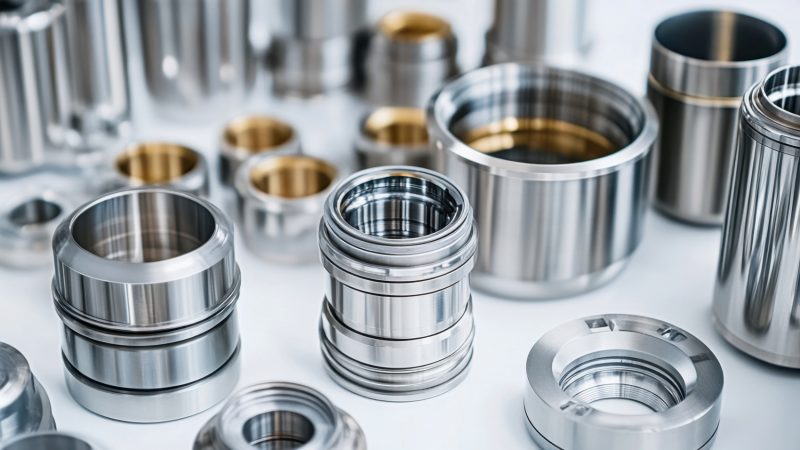The Use Of Plastic Throughout History
Plastic is one of the most used materials in the world. Odds are you’re holding or looking at it at this very instant. The word meant something pliable and easily shaped. In recent times, it has been used for a category of materials called polymers. Polymers are made of long chains of molecules. This is what gives them their unique strength and flexibility. Thus making them a very useful and necessary item in this age. Polymers or plastic today are used in all kinds of products and are perhaps the most widely used substance for mass manufacturing.
Past
The synthetic polymer was first created in the year 1869 by John Wesley as a substitute for Ivory. This was inspired by a challenge published by a New York firm offering 10000$ to anyone who could come up with a substitute. Thus started the journey of plastic to its now reached importance.
Before polymer, ivory was used. Ivory was in a limited supply and therefore people were dependent on nature for it. People no longer needed to chop down wood or kill elephants for their tusks. Now humans could create themselves. The invention or development of the first polymer was groundbreaking for humans. Humans were not limited by trees, bones, ivory, and whatnot. Neither would nature have to be affected due to the never-ending human needs.
The creation of plastic also had great economic and social impacts as well. Since production was no longer limited, it led to more jobs and work. This had a significant social and economic impact too. The social and economic constraints put by the scarcity of resources were finally lifted.
In 1907, the first fully synthetic plastic was created. This contained no molecules found in nature. The name of the plastic was Bakelite. It was mostly constructed for the electrical industry as an insulator. However, it was marketed as a product with 1000 uses. This was because of its ability to be molded into just about anything.
These two successes resulted in large companies investing in the research for synthetic polymers. They focused on producing synthetic material first and worrying about its uses later on.
Present
After world war 2 it was prominent that industrial might had a huge factor in the Allies’ victory. Thus an expansion of the use of plastic was imminent. During world war 2, a synthetic polymer such as nylon was used for parachutes, etc because natural resources had to be saved up due to scarcity. Such uses of plastic only cemented its place as a versatile and multi-purpose material. After world war 2, plastic production in the US was increased by 300%.
In today’s world, we are surrounded everywhere by plastics. Even the most common products such as makeup items e.g, individual lashes vs strips use polymers. Phones, laptops and just about everything is a product of plastic. Companies such as RYD tooling use the latest and most advanced techniques such as injection molding polystyrene. These techniques have revolutionized production and manufacturing in today’s world.
Many industries such as electronics, automotive, and packaging are highly dependent on plastics. Any halt in the production of plastic can lead to disastrous effects on these industries. The economic dependence on plastics is massive in this day and age.
Problems
However, it’s not all positive. People soon started to notice that plastic products were not degrading quickly enough. Their waste was first noticed in the oceans during the 1960s. This was when people realized that such heavy usage and dependency on plastics was inevitably bad. As people continue being more aware of the environment, the perception of plastic changes.
Another problem with plastic is its perception of being cheap or flimsy. The material once full of possibilities and a symbol of the future was now being thought of as cheap.
Future
There is no doubt that the perception of plastic in today’s time is not very positive. However, it remains critical to human life. There is no clear alternative for plastic at the moment. They save limited resources such as fossil fuel due to their lightweight and low energy consumption. The plastic used in cars makes them lighter weighted and improves fuel economy. They also helped raise the standard of living for almost everyone. Without plastic, most of the products that we take for granted would be left for the rich.
The future may seem dark for plastics but it’s not. Due to their necessity, scientists have been working on creating more sustainable variants of the material. Bioplastic is a prime example of such material. Others are working on biodegradable plastics. These materials will provide the best to both worlds. They’ll allow the industries to use plastic. While also not having any major negative impacts on the environment.
In conclusion, one thing is certain. One shape or the other, plastics are not going anywhere. They are here to stay. Hopefully, the research and development of more sustainable plastics bear fruit. Resulting in a better environment where manufacturing and production can keep up to scale as well.
Conclusion
Plastic has seen many uses over the years and has remained a core material for many industries. There is no doubt that plastic will continue to be a necessity for many products in the future too. We are excited to see how plastic is used 20 years down the line.





